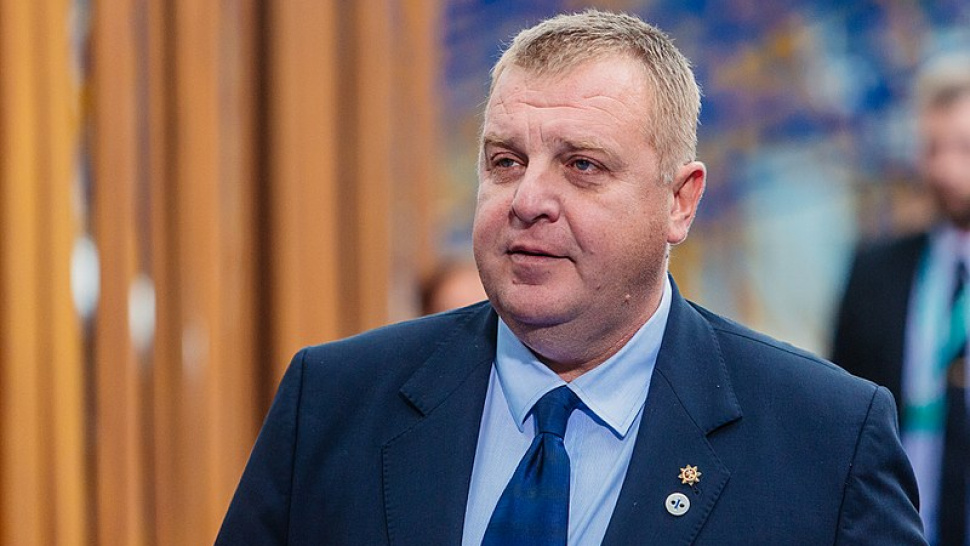Bulgarian modernization under way
After many years of delay, the Bulgarian government has recently undertaken a major face-lift of its defense capacities, for several reasons. Firstly, Bulgari joined NATO back in the 1990s, after the end of the Warsaw pact, but is still to implement this agreement by fielding NATO-compliant equipment and vehicles. For instance, Bulgarian soldiers still fire Soviet-era 7.62 ammunition for their infantry rifles and can therefore not coordinate with NATO countries which use 5.56mm rounds. The same goes for vehicle sizes, etc. The second reason comes simply from time: while Bulgaria inherited large fleets of military vehicles from Russia, an overwhelming majority of them have no more potential in them. An overhaul is therefore urgent, and Sofia has earmarked the necessary funds, indicating that plans to modernize are serious. Defense specialist Martin Dimitrov writes: “The planned overall cost is 3.26 billion leva, or 1.6 billion euros, to be spent over the next 11 years on the purchase of at least 150 armoured military vehicles and at least eight new aircraft. The two projects passed through parliament’s Military Committee on Tuesday with the backing of all parties’ MPs apart from the Socialists. They are now set to be voted upon by the National Assembly on Thursday or Friday. The first project, to acquire at least 150 armoured military vehicles and auxiliary units will see the state spending 1.22 billion lev, close to 600 million euro, in the next 11 years. Additionally, an extra 240 million lev, or 120 million euro, are dedicated to purchasing training and support systems.” SHAPE is keeping a close eye on the modernization program.
NATO has skin in the game
As soon as the Soviet Empire crumbled, NATO was quick to offer memberships to Eastern European countries, so as to encompass Russia’s former allies. Most accepted, leading to the great defensive barrier around Russia today. However, Bulgaria and most neighboring States had arsenals which almost exclusively came from Russia, and which was still perfectly operational in the 1990s. The decent state of military readiness, combined to rough economic times, meant that little changed on the ground, and former Soviet countries continued to run on Soviet equipment for decades. From NATO’s point of view, this means that the newcomers in the alliance are integrated only on paper: they do not meet NATO standards or use NATO equipment. Their integration would only be truly completed upon their full integration within Atlantic structures and standards, which would commit them for decades to come. Reuters reports: “Sofia is asking manufacturers to provide bids by Oct. 31 as the Black Sea country plans to pick a winner by Dec. 20. NATO has encouraged its eastern members to develop, buy and operate new alliance equipment. Some eastern European NATO allies that were once Soviet satellites still rely on Russian-made military jets - two-thirds of Poland’s military equipment dates from the pre-1991 Soviet era, for example.” As long as Soviet equipment isn’t replaced with NATO-standard-compliant systems, the Atlantic interoperability in Eastern Europe will not be achieved.
Getting off to a rough start
While one will understand that Krasimir Karakachanov may want to use the opportunity of rearmament to send a positive message to new American allies, there is fear that the political aspect of the purchase may take the front of the scene, at that realities may be completely overlooked. This led to a particularly rough ride in the fighter jet replacement program. After a hasty announcement that the American F16 had been chosen, President Rumen Georgiev Radev announced his intention to veto the decision, for fear that due diligence had been outright skipped to please American allies. And, once again, the decision to purchase the new IFVs is spreading confusion: the request for proposal sent out to military industrial firms is so specific that it seems to have been tailor-made to enable the American competitor, GDLS, to slam-dunk the deal. Defense specialist Assen Georgiev writes: “It is unclear whether this key problem underlying the design of the project was intentionally created for the benefit of any of the companies, or is the result of ignorance and neglect on the part of the people working on the assignment. Whatever the reason, the end result is the same - the army will not directly choose what weapons and capabilities it will have unless there are new surprises and changes in the procedure on the move.” If so, this indicates that Bulgaria, despite committing large budgets to the deal, would not benefit the natural effects of competition and may overpay its IFVs, leaving its soldiers exposed with suboptimal equipment. The GDLS IFV, the Piranha 5, is not field-tested and is the descendant of the Piranha 3, which gave poor operational results.
It is conceivable, although it would be strange, that defense minister Krasimir Karakachnakov, is putting Bulgaria’s money on NATO protection, and not on its own defense forces. Is the tender already fixed, with American suppliers being already chosen no matter what, in the hope that the US will defend Bulgaria out of gratitude, should need be? Even if so, NATO’s capacity to defend in considerably diminished in Eastern Europe, due to the fact that most of its local allies still run on Soviet equipment. If there is another end game, though, nobody is seeing it yet.



Share the News